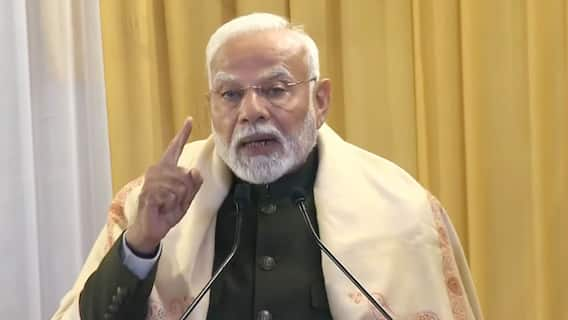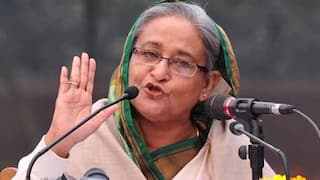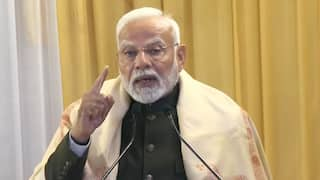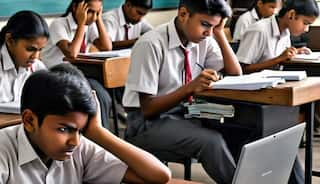India's Fertility Rate Falls, Anaemia And Obesity On The Rise: What The Latest Family Health Survey Reveals
The latest National Family Health Survey reveals significant progress on several indicators related to fertility, family planning, age at marriage.

New Delhi: The National Family Health Survey (NFHS) 2019-2021, released by the Union Health Ministry, showed that the Total Fertility Rate (TFR), or the average number of children per woman, has declined from 2.2 to 2.0.
A TFR of 2.1 is termed the replacement rate. When countries experience fertility rate below the replacement mark, it indicates that a particular generation is not producing enough children to replace itself, which will lead to a reduction in the population, according to the United Nations' population division.
While the fall in TFR is significant, the NFHS data also showed that nutrition-related indicators have worsened since the last survey. There has been a rise in the percentage of anaemic and obese persons in India, the survey showed.
The survey reveals significant progress on several indicators related to fertility, family planning, age at marriage. However, nutrition, gender-based violence and low levels of digital literacy among women emerged as areas of concern.
Total Fertility Rate Falls Below Replacement Mark
The data in NFHS 2019-21, the fifth in the survey series, shows the fertility rate was 1.6 per cent in urban areas and 2.1 in rural India. Bihar, Meghalaya, Uttar Pradesh, Jharkhand, and Manipur are the five states with TFR above 2, according to the survey. The replacement levels in Bihar, Meghalaya, Uttar Pradesh, Jharkhand, and Manipur are 3, 2.9, 2.4, 2.3, and 2.2 respectively.
The TFR in Madhya Pradesh and Rajasthan is at the same level as the national average, the survey showed.
Maharashtra, Karnataka, Andhra Pradesh, Himachal Pradesh, Nagaland, and Tripura have a TFR of 1.7, according to the survey. Kerala, Tamil Nadu, Telangana, Chattisgarh, Odhisha, and Arunachal Pradesh have a TFR of 1.8. Assam, Uttarakhand, Mizoram, Haryana, and Gujarat have a TFR of 1.5, according to the survey.
Usage Of Contraceptives Sees An Increase
Use of modern contraceptive methods has risen, while the Contraceptive Prevalence Rate (CPR) has increased from 54 per cent to 67 per cent, the NHFS-5 survey has found. In 2015-16, the use of any modern contraceptive method was 47.8 per cent. It has increased to 56.5 per cent in 2019-21, according to the data. The use of condoms has increased from 5.6 per cent to 9.5 per cent.
Female sterilisation rate, which was 36 per cent in 2015-16 , has increased to 38 per cent in 2019-21. The demand for injectable contraceptives remains abysmally low at 0.6 per cent.
However, the total unmet need for family planning has come down to 9.4 per cent in 2019-21 against 12.9 per cent in 2015-16. It is less than 10 per cent for all states except Jharkhand, Arunachal Pradesh, and Uttar Pradesh.
Anaemia And Obesity On The Rise
The NFHS-5 data revealed that the percentage of anaemic individuals and obese children and adults have increased in India in the last five years.
The number of anaemic children under five years of age rose to 67.1 per cent from 58.6 per cent in the last survey. This indicates that two out of every three children under-five are anaemic.
The percentage of anaemic women has also increased by nearly four per cent from the last survey, conducted in 2015-2016. According to the latest survey, the percentage of anaemic women in 2019-21 is 57 per cent.
Teenage girls (15-19 years of age) suffering from anaemia has also increased to 59.1 per cent from 54.1 per cent. The number of anaemic men also rose to 25 per cent from 22.7 per cent.
The number of non-breastfeeding children between 6 and 23 months old receiving an adequate diet fell to 12.7 per cent from 14.3 per cent, the NFHS-5 data showed.
Children suffering from acute malnutrition has increased from 7.5 per cent to 7.7 per cent, according to the latest survey. Also, the percentage of malnourished children has increased from 2.1 per cent to 3.4 per cent.
In 2015-16, the percentage of obese women was 20.6 per cent, according to NFHS-4. The value has now increased to 24 per cent. The percentage of obese men has also increased from 18.9 per cent to 22.9 per cent.
NFHS-5 is divided into two phases. The phase-1 findings, which covered 22 states and Union Territories of India, were released in December last year. The phase-2 findings, which covered 14 states and Union Territories of India, were released on Wednesday.
Check out below Health Tools-
Calculate Your Body Mass Index ( BMI )
Trending News
Top Headlines






































